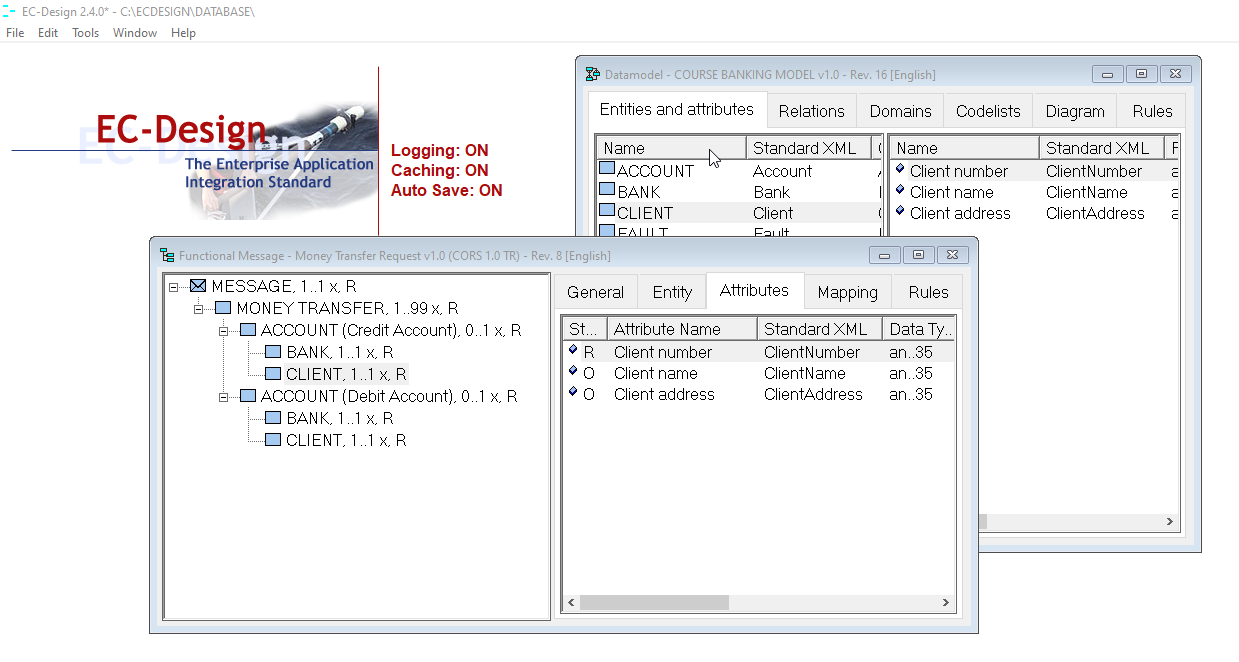EC-Design packed with new functionality

In the first quarter of 2020, Digitect will deliver a new version of the EC-Design modeling tool. In the past six months, Digitect has been able to realize many functional wishes of users and improvements in performance. A selection from this:
Generate Java Classes
Java Classes can be generated at the Data Model, Transaction Model and Functional Message level. The Java Classes can optionally be provided with random annotations, so that the classes seamlessly connect with frequently used Java libraries. This makes the Java Classes suitable, for example, for use in JSON environments and for the use of rule engines such as Operational Decision Manager (ODM) from IBM.
Set Font Size
Font size on the input and output screens can be set by the user in this version. A choice can be made between small, medium and large.
Diagram Grid
When drawing a diagram, use is now made of "grid". This helps the user to create diagrams, with well-centered entities placed on one imaginary line.
Automatic update of the Transaction Model
Since incorporating version management in EC-Design, the underlying Transaction Model must also be opened and saved manually in the event of a change to the Data Model, before an underlying message can be modified. This has now changed. When a message is opened and the corresponding transaction is not yet up-to-date, the user can automatically execute it.
Hyphen in codes
In the new version, a hyphen ("-") is also allowed in a code list code. This concerns, for example, the following code values: Pre-order, Pre-subscribe.
Multiple format variants possible with Date Time fields and Boolean fields
In the new version it is possible to define multiple syntax-dependent formats for a domain with data type Date / time or Boolean. A well-known example is a date field that has the CCYYMMDD format in a Flat File, but has the CCYY-MM-DD format in XML. EC-Design now creates the correct format in the sample messages.
Performance improvement with installation in a network environment
Various performance improvements have been implemented in the new version, making processing over network connections considerably faster.
EC-XBRL design realized
EC-XBRL is Digitect's vision to reduce the complexity of XBRL to a simple and understandable level. Digitect has realized a design for this in the past year. With EC-XBRL the following becomes possible:
Management of a functional data model with which all messages are consistently defined;
With every technical XBRL message a complete, comprehensible, functional specification is automatically supplied, so that the content of the messages can be understood by everyone;
The XBRL specifications are kept as simple as possible, so that implementation becomes simple.
 EN
EN NL
NL